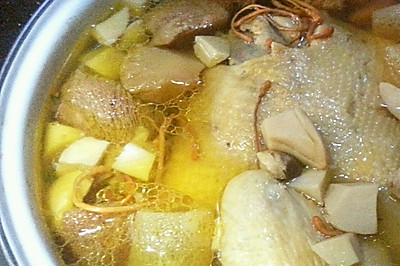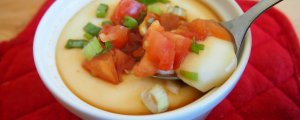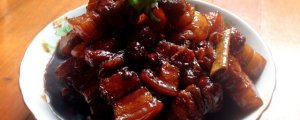
[steamed wormwood with spicy celery]
(94343 views)![[steamed wormwood with spicy celery]](https://cp1.douguo.com/upload/caiku/d/0/d/yuan_d03789a126ddaa2401a5988475e2576d.jpg)
Cordyceps flower is rich in Cordyceps polysaccharide (including oxalic acid), protein, 18 kinds of amino acids, 17 kinds of microelements, 12 kinds of vitamin-A, B1, B2, B6, B12, C, D, e, etc., which are higher than mushrooms. Cordyceps flower is not a flower. It is essentially a Cordyceps fruiting body, not a Cordyceps fruiting body. The culture medium is made up of various nutrients of natural insects, including grains, beans, eggs and milk. It belongs to fungi-
Cooking ingredients
Cooking Steps

Step1:Material collectio

Step2:Wash the Cordyceps flowers with clear water twice. The natural growth of Cordyceps flowers will not fade. Drain the water for use.

Step3:Put Cordyceps in the plate and add 3G peanut oil and mix wel

Step4:Put the steam in the steamer and steam for 5 minutes to turn off the fire.

Step5:Cut the celery into thin slices in advance and put it on the plate, cover the pot and simmer for 2 minutes before leaving the pot.

Step6:Chop up the garlic, green and red peppers in advance. Add the sauce, salt and sugar. Pour in the boiling oil.

Step7:Finished product - pour the sauce into the plate. Mix evenly when eatin

Step8:Finished produc

Step9:Finished produc

Step10:Finished product - fresh, crispy and tender. Rich taste.
Cooking tips:Cordyceps has a unique fragrance, such as the aroma of straw mushroom. It tastes delicious when cooked or made into soup. But when washed, it is decolorized, has a peculiar smell and tastes worse when eaten. It may be dyed. The quantity, integrity and plumpness of Cordyceps flower directly determine the quality and taste of Cordyceps flower.
 Chinese Food
Chinese Food












